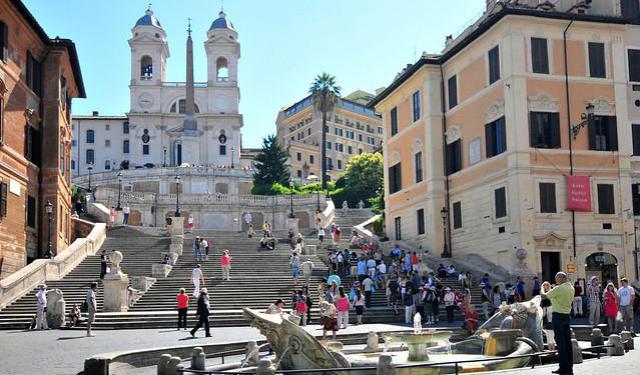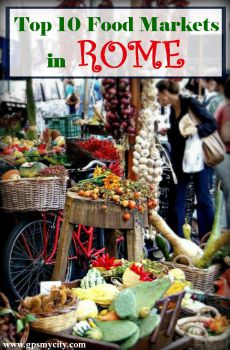Biblioteca Apostolica Vaticana (Vatican Apostolic Library), Rome
The Vatican Apostolic Library, one of the world’s oldest and most prestigious libraries, holds an extensive collection of historical texts and manuscripts. It is located within the Vatican Palace and can be accessed through the Belvedere Courtyard. While officially established in 1475, its origins trace back much earlier, making it a vital repository of historical and cultural heritage.
The library’s foundation began in 1448 when Pope Nicholas V consolidated approximately 350 Greek, Latin, and Hebrew manuscripts from his predecessors with his own private collection and new acquisitions. These included texts from the Library of Constantinople. By 1455, Nicholas V had expanded the library to 1,200 books, solidifying its role as a major intellectual center. Under Pope Sixtus IV, it grew into the Palatine Library, the largest in Western Europe at the time. Later, Pope Sixtus V (who held office from 1585 to 1590) commissioned Domenico Fontana to construct a new building, which remains in use today. In its early years, books were displayed on benches and chained to prevent theft.
The library’s collection continued to grow through various acquisitions and gifts. In 1623, the Palatine Library of Heidelberg was transferred here. The Dukes of Urbino’s manuscripts were added in 1657, followed by Queen Christina of Sweden’s collection in 1689. Under Pope Clement XI, an Oriental section was established. The Vatican Film Library, created in 1959, further expanded its holdings.
Today, the Vatican Library houses 75,000 ancient manuscripts, 1.1 million printed books, and 8,500 so-called “incunabula” – the books printed before the invention of the printing press. Notable treasures include one of the oldest nearly complete Bibles – in Greek (dated the 4th century); the Codex Borgia, an important Mesoamerican manuscript; and a tiny 45mm Quran.
The vast facility includes 42 km (or 26 miles) of shelving, along with specialized areas for manuscript storage, restoration, and photographic archiving. The Vatican Secret Archives, now called the Vatican Apostolic Archive, was separated from the library in the 17th century and holds 150,000 additional documents of historical importance.
Although primarily known for its theological texts, the library also preserves significant secular works, particularly Greek and Latin classics that were essential to the Renaissance. Some 6,000 new books are acquired annually. Additionally, the collection comprises 330,000 coins and medals.
As a research library for scholars in history, law, philosophy, science, and theology, the Vatican Apostolic Library remains an essential institution for global intellectual and cultural heritage. Access is restricted to qualified researchers, ensuring that its invaluable resources continue to be studied and preserved.
The library’s foundation began in 1448 when Pope Nicholas V consolidated approximately 350 Greek, Latin, and Hebrew manuscripts from his predecessors with his own private collection and new acquisitions. These included texts from the Library of Constantinople. By 1455, Nicholas V had expanded the library to 1,200 books, solidifying its role as a major intellectual center. Under Pope Sixtus IV, it grew into the Palatine Library, the largest in Western Europe at the time. Later, Pope Sixtus V (who held office from 1585 to 1590) commissioned Domenico Fontana to construct a new building, which remains in use today. In its early years, books were displayed on benches and chained to prevent theft.
The library’s collection continued to grow through various acquisitions and gifts. In 1623, the Palatine Library of Heidelberg was transferred here. The Dukes of Urbino’s manuscripts were added in 1657, followed by Queen Christina of Sweden’s collection in 1689. Under Pope Clement XI, an Oriental section was established. The Vatican Film Library, created in 1959, further expanded its holdings.
Today, the Vatican Library houses 75,000 ancient manuscripts, 1.1 million printed books, and 8,500 so-called “incunabula” – the books printed before the invention of the printing press. Notable treasures include one of the oldest nearly complete Bibles – in Greek (dated the 4th century); the Codex Borgia, an important Mesoamerican manuscript; and a tiny 45mm Quran.
The vast facility includes 42 km (or 26 miles) of shelving, along with specialized areas for manuscript storage, restoration, and photographic archiving. The Vatican Secret Archives, now called the Vatican Apostolic Archive, was separated from the library in the 17th century and holds 150,000 additional documents of historical importance.
Although primarily known for its theological texts, the library also preserves significant secular works, particularly Greek and Latin classics that were essential to the Renaissance. Some 6,000 new books are acquired annually. Additionally, the collection comprises 330,000 coins and medals.
As a research library for scholars in history, law, philosophy, science, and theology, the Vatican Apostolic Library remains an essential institution for global intellectual and cultural heritage. Access is restricted to qualified researchers, ensuring that its invaluable resources continue to be studied and preserved.
Want to visit this sight? Check out these Self-Guided Walking Tours in Rome. Alternatively, you can download the mobile app "GPSmyCity: Walks in 1K+ Cities" from Apple App Store or Google Play Store. The app turns your mobile device to a personal tour guide and it works offline, so no data plan is needed when traveling abroad.
Biblioteca Apostolica Vaticana (Vatican Apostolic Library) on Map
Sight Name: Biblioteca Apostolica Vaticana (Vatican Apostolic Library)
Sight Location: Rome, Italy (See walking tours in Rome)
Sight Type: Attraction/Landmark
Guide(s) Containing This Sight:
Sight Location: Rome, Italy (See walking tours in Rome)
Sight Type: Attraction/Landmark
Guide(s) Containing This Sight:
Walking Tours in Rome, Italy
Create Your Own Walk in Rome
Creating your own self-guided walk in Rome is easy and fun. Choose the city attractions that you want to see and a walk route map will be created just for you. You can even set your hotel as the start point of the walk.
Vatican Walking Tour
Consisting of a walled enclave within the city of Rome, the Vatican is the world’s smallest sovereign state, as well as a symbol (and headquarters) of the Roman Catholic faith. Although only 44 hectares in surface, one is amazed by the vastness of this place and the sheer size of everything. When gazing around in all directions, you realize how much can be achieved by people working in faith for... view more
Tour Duration: 2 Hour(s)
Travel Distance: 3.4 Km or 2.1 Miles
Tour Duration: 2 Hour(s)
Travel Distance: 3.4 Km or 2.1 Miles
Seven Pilgrim Churches of Rome Walking Tour
Rome has long played host to pilgrims-after all, it's home to the Pope, the Catholic Curia, and a treasure trove of relics linked to apostles, saints, and martyrs. Back in the day, the Via Francigena provided a straight shot for the faithful traveling from England to Rome. Upon arrival, it was tradition to visit the tombs of Saints Peter and Paul. When a Jubilee rolled around, the spiritual... view more
Tour Duration: 6 Hour(s)
Travel Distance: 17.4 Km or 10.8 Miles
Tour Duration: 6 Hour(s)
Travel Distance: 17.4 Km or 10.8 Miles
Roman Forum and Imperial Forums Walking Tour
t's a known fact that Rome wasn't built in a day. But since it was built, the city has stood the test of time and become "eternal." A popular proverb says, "all roads lead to Rome," but very few realize that, inside Rome itself, all roads lead to the Forum.
Indeed, the central hub of ancient Rome, the Roman Forum and the Imperial Forums once served as the... view more
Tour Duration: 2 Hour(s)
Travel Distance: 2.0 Km or 1.2 Miles
Indeed, the central hub of ancient Rome, the Roman Forum and the Imperial Forums once served as the... view more
Tour Duration: 2 Hour(s)
Travel Distance: 2.0 Km or 1.2 Miles
Holy Sites Walking Tour
As the cradle of the Catholic Church, one of the world's largest organizations, Rome has a large number of valuable, sacred places of worship. Crowded with architectural splendors from different periods of time, each of its churches and basilicas represent a significant part of culture and history.
Take this self-guided walking tour to discover Rome's magnificent religious heritage,... view more
Tour Duration: 3 Hour(s)
Travel Distance: 6.9 Km or 4.3 Miles
Take this self-guided walking tour to discover Rome's magnificent religious heritage,... view more
Tour Duration: 3 Hour(s)
Travel Distance: 6.9 Km or 4.3 Miles
Palatine Hill Walking Tour
Palatine Hill — one of Rome’s legendary Seven Hills — is the most ancient part of the city. According to mythology (and a fair bit of archaeology backing it up), this is where the whole Roman saga began to unfold in the year 753 BC when young Romulus pointed dramatically at the hill and probably thought to himself: “Yes, this is the spot.” And just like that, a city that would eventually... view more
Tour Duration: 2 Hour(s)
Travel Distance: 2.6 Km or 1.6 Miles
Tour Duration: 2 Hour(s)
Travel Distance: 2.6 Km or 1.6 Miles
Spanish Steps to Trevi Fountain
An established tourist mecca, today's Rome is hardly imaginable without two of its much loved attractions – the Spanish Steps and the Trevi Fountain. Magnets for tourists as they are, these two sights are connected to a number of other, not less worthy of attention locations, such as the Fountain of the Longboat or Piazza Colonna and its centerpiece, the Column of Marcus Aurelius, to... view more
Tour Duration: 1 Hour(s)
Travel Distance: 2.0 Km or 1.2 Miles
Tour Duration: 1 Hour(s)
Travel Distance: 2.0 Km or 1.2 Miles
Useful Travel Guides for Planning Your Trip
Souvenirs Shopping: 15 Authentic Italian Things To Buy in Rome
Rome is the Eternal City and, as such, the list of gift options available here is countless. Whether it's something edible, drinkable, wearable or pleasing to the eye that you want - you will find it all here in abundance. However, if time or budget is the factor, perhaps you might want to...
10 Best Food Markets in Rome Italy
Of all the things Italy is most famous for (cars, music, fashion, movies, etc.), food is, undoubtedly, top of the list. Rome may well not be the whole Italy, but no Italy is whole without Rome... And the Romans, much as all their fellow-Italians, like it "fresco", hence the abundance of...
17 Best Gelaterias in Rome Italy
For ice cream lovers and dabblers this guide is a treasure chest of Rome’s best gelato shops. There are gelaterias everywhere. Many visitors to Rome only have a few days to explore the city. You owe it to yourself to make the most of your time and find the gelato locals eat. Often the authentic...












